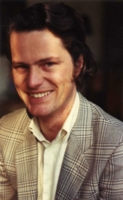Downing Street
London Newspaper Group — CN/WPN 18-05-1979
From Flood Street to the serenity of those timeless 'tied lodgings'...
By CHRISTOPHER LONG
This item followed the appointment of Margaret Thatcher as Prime Minister, causing her to move from her former home in Flood Street, Chelsea, to Downing Street in Westminster.
By Christopher Long
See London Newpaper Group Items
 So, Westminster has a new resident. Or, to be more exact a new resident in No 10 Downing Street.
So, Westminster has a new resident. Or, to be more exact a new resident in No 10 Downing Street.
And while the new administration starts making new appointments, filling old positions with new men, to a lot of them their new-found surroundings will seem strange and exciting, even if, as in the case of the Chancellor, the Prime Minister and other senior officials, the 'tied' lodgings which go with the jobs in and around Westminster are already familiar to them.
Downing Street, of course, is best known as the home of the Prime Minister and the Chancellor of the Exchequer at Nos. 10 and 11 respectively. But of course both these houses and the third in the row, No 12, are very much more than official residences.
Certainly there are fine flats overlooking the large garden at the rear of No 10, but they represent only a fraction of the surprisingly large complex that consists of the Cabinet room, Press offices, reception rooms, administrative offices and other departments. A Prime Minister or Chancellor can hardly escape the fact that they live very much 'over the shop'. And a 'shop' that simply oozes with history.
For Downing Street has changed over the last couple of hundred years. The well-known Georgian facades give no indication that their foundations are firmly set into the remains of the old Palace of Westminster, long since gone.
No 10, for example, now sits over Henry VIII's 'real' (Royal) Tennis Courts, while the famous steps leading from Downing Street towards St James's Park are relatively new, standing where once was the old Colonial Office until it was destroyed by fire, early in the 19th century.
Inside, the three principal houses, No 10, 11 and 12, are interconnected, so that it is hard to tell one from the other. Light and spacious, they are filled with paintings, photographs and ephemera recalling distant as well as more recent political faces and famous documents.
But the overall atmosphere, say people who work there, is one of surprising peacefulness and calm. Whatever the political storms outside or across the square in Parliament, this relaxed and timeless atmosphere prevails.
And perhaps the timelessness is enhanced by the relics of the past. Standing in the offices of the Chief Whip at No 12 is the desk used by Disraeli and still used today, while beside it is the very ordinary but comfortable arm chair used by Churchill during the war [WWll], from which much of the war was actually conducted.
Upstairs in No 10 is the Prime Minister's flat, overlooking the large but simple garden behind Horse Guards Parade. Above No 11 and extending over the lower floors of No 12 is the Chancellor's accommodation. Downstairs in No 11 are the Chancellor's study and adjoining reception rooms – origin of the famous budgets – although he has, of course, more extensive and day-to-day offices in the Treasury as well.
Another interesting feature of the buildings is in No 12, at one time adjoining the former Colonial Office which filled the end of Downing Street. There, the one and only meeting between Nelson and Wellington took place. The celebrated meeting happened by accident as the soldier and sailor waited in the ante-room before going in to speak with their masters in the Colonial Office.
Nelson, it is said, spoke expansively of his exploits and achievements, little realising that the soldier in the corner was none other than Wellington. Later, Nelson inquired who the soldier might be, and on discovering the answer, returned to the ante-room to meet his military counterpart. And Nelson's attitude is said to have been considerably more muted and modest.
That room is still an ante-room, and is still a meeting place for politicians where, late into the night, friends and rivals discuss and argue the issues of the day outside the Whip's offices.
See London Newpaper Group Items
There are several other items referring to Sir Winston Churchill and Margaret Thatcher on this site: e.g. Chartwell and Margaret Thatcher.
© (1979) Christopher Long. Copyright, Syndication & All Rights Reserved Worldwide.
The text and graphical content of this and linked documents are the copyright of their author and or creator and site designer, Christopher Long, unless otherwise stated. No publication, reproduction or exploitation of this material may be made in any form prior to clear written agreement of terms with the author or his agents.
















